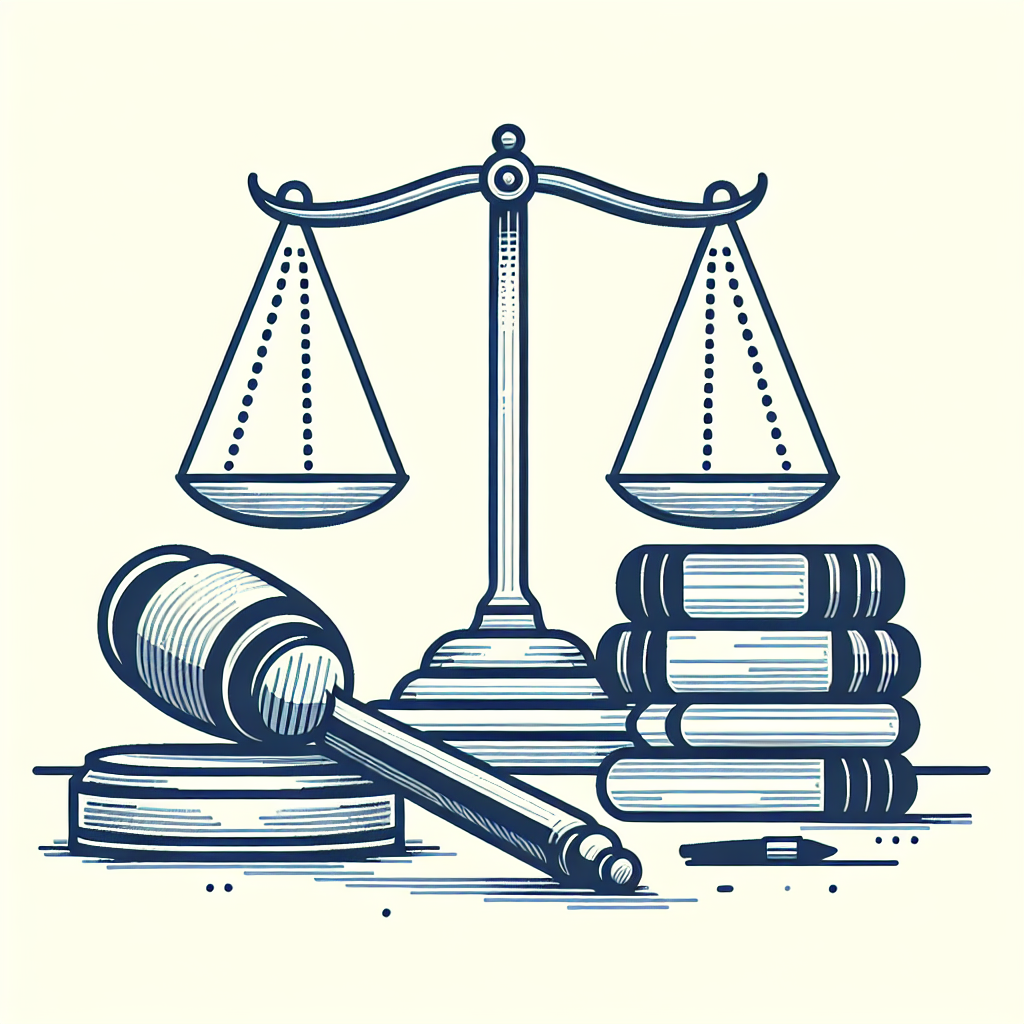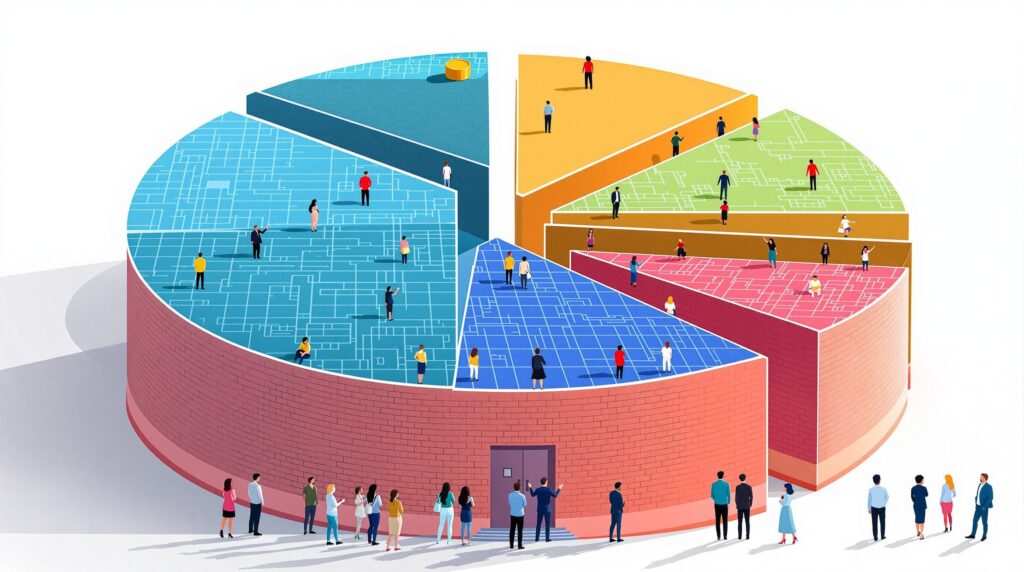[rev_slider alias=”slider-1″][/rev_slider]
Understanding Layer 1 Blockchains: Speed and Efficiency
As the backbone of cryptocurrency and decentralized applications, Layer 1 blockchains are fundamental to the digital asset landscape. These blockchains serve as the main architecture for a network, supporting all transactions and decentralized applications (DApps) that operate on top of them. In this section, we’ll dive into what Layer 1 blockchains are, their crucial role in the crypto ecosystem, and why their speed and efficiency matter.
Key Characteristics of Layer 1 Blockchain Solutions
Layer 1 blockchains are the original frameworks on which various cryptocurrencies are built. They function as the main ledger of transactions for a decentralized network. Some well-known examples include Bitcoin, Ethereum, and Binance Smart Chain. These platforms are designed to ensure immutability, security, and continuity of data without the need for a central authority. Key features include:
- Decentralization: Unlike traditional banking systems, Layer 1 blockchains operate on a decentralized network of nodes, ensuring there is no single point of failure.
- Security: Layer 1 solutions utilize cryptographic techniques to ensure data integrity and security for all transactions.
- Scalability: This is a major focus area where Layer 1 blockchains vary significantly. Scalability often determines the speed and throughput of the network.
- Consensus Mechanisms: These are protocols that help ensure all transactions are verified and added to the blockchain universally across all nodes. Common mechanisms include Proof of Work (PoW) and Proof of Stake (PoS).
What drives the speed of Layer 1 blockchains? The architecture, consensus mechanism, and node network size are pivotal factors contributing to the blockchain’s transaction processing capacity.
The speed of a blockchain is typically measured in transactions per second (TPS). A higher TPS rate can handle more transactions, making the network faster and more efficient. This is crucial not only for traders and investors looking to execute transactions quickly but also for maintaining a scalable network as user adoption grows.
For instance, Bitcoin typically processes 7 TPS, while Ethereum can handle around 30 TPS. In comparison, newer blockchains like Solana boast a higher TPS due to different consensus mechanisms and network designs, which can support upwards of 65,000 TPS.
The Importance of Speed and Efficiency in Layer 1 Blockchains
Why does speed matter in Layer 1 blockchains? Fast transaction times enhance user experience by reducing the time it takes to confirm transactions. This is particularly important in scenarios like:
- Financial Transfers: In high-stakes trading environments, even a small delay can result in significant financial differences.
- Smart Contracts: Many DApps rely on smart contracts which need to execute actions on the blockchain swiftly to ensure efficient operational performance.
- Scalability: As networks grow and attract more users, the ability to handle large volumes of transactions quickly is crucial to sustain network growth without congestion.
This need for speed and efficiency is why there’s a constant pursuit among Layer 1 solutions to innovate and improve. This innovation not only concerns increasing transaction capacity but also includes reducing energy consumption and improving security frameworks.
Ultimately, the efficiency of a Layer 1 blockchain impacts its adoption. Faster blockchains can offer a more seamless experience, potentially attracting a wider user base and giving rise to an increased volume of decentralized applications.
In conclusion, understanding the complexities of Layer 1 blockchains and their operation speeds is more than just technical interest; it’s about grasping how these foundational platforms support the broader digital economy in a tangible, everyday sense.
Factors Influencing Blockchain Speed: A Comparative Analysis
Understanding the speed of layer 1 blockchains is crucial not just for developers and businesses, but for anyone engaged in the digital market space. Let’s delve into the intricacies of various factors that accelerate or hinder blockchain operations, focusing primarily on consensus mechanisms and network architecture.
Consensus Mechanisms: Proof of Work vs Proof of Stake
A fundamental aspect affecting blockchain speed is the consensus mechanism employed. Two of the most common mechanisms are Proof of Work (PoW) and Proof of Stake (PoS). Each has distinct operations and impact on transaction speed and network efficiency.
What is Proof of Work? This consensus mechanism involves solving complex cryptographic puzzles, which requires significant computational power and energy but provides high security.
What is Proof of Stake? Unlike PoW, PoS involves validators who own coins and are chosen at random to validate transactions, making it faster and more energy-efficient.
Let’s break down how these mechanisms dictate the performance of a blockchain:
- Transaction Speed: PoW-based blockchains like Bitcoin are slower because the process to mine a block is power-intensive and time-consuming. On the other hand, PoS systems can process transactions more swiftly as they only require validators to stake their coins as a form of security.
- Energy Consumption: PoW requires a considerable amount of electricity, contributing to larger carbon footprints. Ethereum’s recent shift to PoS (Ethereum 2.0) highlights a move towards more sustainable blockchain technologies that are both quicker and environmentally friendly.
- Network Throughput: The ability of a blockchain to handle large volumes of transactions largely depends on its consensus mechanism. PoS offers better transaction throughput capabilities compared with PoW, owing to its less resource-intensive validation process.
Furthermore, the choice between PoW and PoS can affect decentralization, a core philosophy behind blockchain technology. While PoW promotes more decentralized networks due to its competitive mining process, PoS might present risks of centralization, as individuals with higher stakes have more control over the network.
In addition to consensus mechanisms, another pivotal factor influencing blockchain speed is architecture. This includes aspects like network size, block size, block time, and interoperability with other platforms.
Network Size and Speed: Larger networks, while robust, often face slower transaction times as more nodes must reach consensus.
Block size also plays a crucial role. For instance, Bitcoin’s relatively small block size of 1 MB limits its processing capacity to about 7 transactions per second (TPS), whereas blockchains with larger block sizes can handle much more, improving transaction speed significantly.
Moreover, newer blockchain models are exploring layer 2 solutions like Lightning Network for Bitcoin and Raiden Network for Ethereum, which operate on top of the blockchain to enable faster transactions.
In summary, the architecture and consensus mechanisms of a blockchain directly impact its speed, efficiency, and suitability for different applications. As the blockchain landscape evolves, understanding these nuances will be essential for anyone involved in this technology.
[rev_slider alias=”text-call-cta”][/rev_slider]
The Importance of Speed in Blockchain Technology
Imagine a world where your online transactions complete in mere seconds, irrespective of global distances. This vision is what drives the development of Layer 1 blockchains. In the rapidly evolving landscape of blockchain technology, speed isn’t just a feature; it’s a critical competitive advantage that can define the success or failure of blockchain platforms. But why is speed so crucial for blockchains, particularly Layer 1 solutions, and how does it affect their adoption and functionality? Let’s delve deeper.
Understanding the Significance of Speed
Speed in blockchain technology often refers to the rate at which transactions are processed and finalized across the network. For businesses and consumers alike, this metric directly impacts usability. Faster blockchains offer a myriad of benefits:
- Increased Throughput: The ability to handle more transactions per second (TPS) is akin to widening a highway to allow more traffic to flow freely. This is vital as more enterprises and sectors adopt blockchain for everyday applications.
- Reduced Latency: In financial transactions, gaming, and real-time applications, every second counts. Low latency ensures that transactions are not just processed, but settled within seconds, providing a smoother user experience.
- Enhanced Scalability: With higher speed, blockchains can scale more effectively to meet growing user demands without becoming bottlenecks.
Consider the broader impact of efficient blockchains: by significantly reducing processing times, they open new opportunities for innovation in sectors like finance, supply chain management, and beyond, where real-time data is crucial.
This push for faster transaction times is not just about keeping users happy. It’s about making blockchain technologies a viable alternative to traditional financial systems which are often encumbered by slower, more cumbersome processing times.
Real-World Implications of Faster Blockchains
Faster blockchains transcend the realm of improved user experience and touch directly on economic implications:
- Lower Transaction Costs: Speed and efficiency typically reduce the cost of network maintenance and transaction fees, making it economically feasible for more users and uses.
- Reduced Latency Means New Markets: High-speed blockchains are crucial in developing functions like stock trading and energy distribution, markets where timing is often synonymous with opportunity.
- More Inclusive Financial Services: By speeding up transactions, blockchains can offer real-time financial services globally, reducing the barriers to entry for underbanked populations.
Moreover, as blockchain platforms compete on various fronts such as security, decentralization, and speed, the latter often becomes a decisive factor for enterprises choosing a platform. Speed enhances not only performance but also trust and reliability in the system’s capacity to handle high-volume, high-speed operations without compromise.
The agility offered by faster blockchains could redefine competitive dynamics in various industries, catalyzing a shift toward more transparent, efficient, and secure digital infrastructures.
Conclusion
The importance of speed in blockchain technology cannot be overstated. It’s a critical factor that can drive wider adoption, foster trust, and open up new opportunities for innovation. For Layer 1 blockchains, ensuring speed without sacrificing security or decentralization will be the key to their widespread acceptance and success in the competitive digital ecosystem. As businesses and consumers increasingly demand real-time processing, the race to refine the speed of Layer 1 blockchains will undoubtedly intensify, shaping the future of blockchain technology.
Future Trends in Layer 1 Blockchain Development
As we look towards the horizon of blockchain technology, the evolution of Layer 1 blockchains promises transformative shifts in how data is processed and transactions are executed. This section will delve into the emerging trends and technologies poised to redefine the speed and efficiency of Layer 1 blockchains, setting the stage for innovative applications and enhanced scalability.
Innovations Shaping the Future of Blockchain Speed
The relentless pursuit of improved performance and speed in blockchain networks has given rise to several key innovations. These advancements not only aim to enhance transaction throughput but also address the inherent limitations that have hampered older blockchain systems.
Understanding the importance of blockchain speed: Faster transaction times can lead to broader adoption in various sectors including finance, healthcare, and supply chain management.
Scalability Enhancements
One of the primary challenges for Layer 1 blockchains has been scalability. Traditional blockchain networks face a trade-off between decentralization, security, and scalability — often referred to as the blockchain trilemma. Innovative solutions such as sharding, where data is partitioned to allow for parallel processing, are now being tested and implemented to increase network capacity without compromising security or decentralization.
- Sharding: This technique divides the blockchain into several smaller pieces or “shards” that can process transactions independently and simultaneously, significantly boosting the throughput.
- Layer 2 Solutions: While not a modification of Layer 1 itself, Layer 2 protocols operate on top of the base blockchain layer to increase transaction capacity and speed. Examples include the Lightning Network for Bitcoin and Plasma for Ethereum.
Consensus Mechanism Innovations
At the heart of blockchain’s architecture is the consensus mechanism, a fundamental aspect that determines how transactions are verified. Innovators are constantly refining these mechanisms to enhance performance and security. Moving beyond the energy-intensive Proof of Work (PoW), many new blockchains adopt Proof of Stake (PoS) or Delegated Proof of Stake (DPoS), which are not only more energy-efficient but also provide faster transaction processing times.
- Proof of Stake (PoS): Instead of requiring vast amounts of computational power to mine blocks, PoS allows blockchain participants to validate block transactions based on the number of coins they hold and are willing to “stake” as collateral.
- Delegated Proof of Stake (DPoS): A more democratic form of PoS, DPoS allows stakeholders to vote for a few delegates who will secure the network on their behalf, reducing the number of nodes required to actively participate in the consensus process and thus increasing transaction speed.
Cryptographic Advances
Advancements in cryptographic techniques are instrumental in enhancing the speed and security of blockchain transactions. Innovations such as zk-SNARKs (Zero-Knowledge Succinct Non-Interactive Argument of Knowledge) enable transactions to be validated without disclosing any underlying data, significantly reducing the transaction data size and improving privacy.
- zk-SNARKs: These cryptographic proofs allow one party to prove it possesses certain information without revealing the information itself. This technology is pivotal in the development of privacy-preserving blockchain applications.
- Secure Multi-party Computation (SMPC): This allows parties to jointly compute a function over their inputs while keeping those inputs private, which is beneficial for decentralized applications (dApps) that require data privacy.
Environmental Considerations
As blockchain technology advances, so does the concern for its environmental impact. Next-generation blockchains are focusing on green consensus algorithms that reduce energy consumption significantly. PoS and DPoS are steps in this direction, but more innovative solutions are on the horizon that seek to align blockchain technology with sustainable practices.
In conclusion, the future of Layer 1 blockchain development is inherently tied to overcoming current limitations through innovative technologies and methodologies. As these advancements unfold, they pave the way for a more efficient, scalable, and sustainable blockchain ecosystem that could revolutionize myriad industries.
[rev_slider alias=”schedule-consultation-btn”][/rev_slider]

Why do consensus mechanisms impact Layer 1 blockchain speeds?
Consensus mechanisms directly influence the speed of Layer 1 blockchains as they determine how transactions are validated. Here’s a brief breakdown:
- Proof of Work (PoW): Requires extensive computational efforts and typically slower, ensuring high security.
- Proof of Stake (PoS): Promotes faster transaction validation as it needs less computational power and rewards based on stake.
Depending on the mechanism adopted, the blockchain can either be speedier but less decentralized, or more secure but slower.
What role does network architecture play in Layer 1 blockchain performance?
Network architecture is critical in shaping the performance of a Layer 1 blockchain. This encompasses:
- Node Distribution: Wider node distribution can enhance security but may slow down the consensus process.
- Layered Architecture: Some blockchains use a layered approach to separate tasks, which may speed up processing times.
The design and topology of the blockchain network significantly affect how swiftly transactions are processed and validated.
How can innovations in blockchain technology improve Layer 1 speeds?
Ongoing innovations in blockchain technology are key to improving Layer 1 blockchain speeds. Prominent developments include:
- Sharding: Divides data among multiple nodes to allow parallel processing, significantly speeding up transactions.
- Layer 2 Solutions: These solutions work on top of the base layer to process transactions more swiftly and batch them to the main chain.
By integrating these technologies, Layer 1 blockchains can achieve higher transaction throughputs with improved scalability.
What are the practical implications of faster Layer 1 blockchains for users?
The speed of Layer 1 blockchains has several practical implications for users, including:
- Reduced Transaction Costs: Faster networks can lower the cost of transactions, making them more economical for users.
- Improved User Experience: Speedier transactions mean less waiting time for confirmations, enhancing the user experience.
- Greater Adoption: As blockchains become faster and more efficient, they are likely to see greater adoption across various sectors.
Thus, speed enhancements not only improve efficiency but also expand the practical utility and appeal of blockchain technology.
This FAQ section is designed to address common questions about Layer 1 blockchains, focusing on their speed and underlying factors. Formatted in HTML with Schema.org markup to enhance SEO and visibility in search engine results.

Explore Related Practice Areas
Explore other relevant topics and practice areas that are closely connected to the subject of Layer 1 blockchain speeds.
| Consensus Mechanisms | Blockchain Scalability |
| Smart Contracts | Cryptocurrency Regulations |
| Blockchain Security | Decentralized Applications |
| Enterprise Blockchain | Cryptocurrency Trading |
List of Top-Rated Layer 1 and Layer 2 Blockchain Solutions Attorneys Serving Jara
Choosing the right legal counsel is crucial when dealing with complex blockchain technology cases. A dedicated and expert attorney in Layer 1 and Layer 2 blockchain solutions will guide you through each step, ensuring you are well-informed and prepared.
Attorney John Doe
Attorney Jane Smith
Attorney Emily White
Hear From Our Satisfied Blockchain Clients
At Jara, client satisfaction is at the core of our practice, particularly in the dynamic field of blockchain technology. The stellar feedback we receive motivates us to maintain high standards of excellence.

[rev_slider alias=”slider-3″][/rev_slider]
[rev_slider alias=”slider-6″][/rev_slider]
Unlock the Potential of Layer 1 Blockchain Technology with Our Expert Guidance
Delve deeper into the world of blockchain technology with our experienced team at Jara. Whether you are a startup or an established enterprise, understanding the nuances of Layer 1 and Layer 2 blockchain solutions can significantly elevate your tech capabilities and business strategy. Don’t let complexity hold you back – let us guide you through the evolving landscape of blockchain technology.
Ready to accelerate your blockchain journey? Contact us at [email protected] or call us directly at 000-000-0000 to schedule a consultation and see how we can tailor our expertise to meet your unique needs.
Awards Recognizing Our Excellence in Blockchain Solutions
-
Listed among the “Top Innovators in Blockchain Technology” 2023 by Blockchain Global Awards
Criteria: Innovation in technology, impact on industry
View Award -
Highlighted among the “Best Tech Futurists” 2023 by Tech Industry Leaders
Criteria: Future tech influence, strategic vision
View Award -
Named as one of “Leading Firms in Blockchain Development” 2023 by Digital Tech Insights
Criteria: Excellence in development, client satisfaction
View Award -
Recognized in the list of “Top Blockchain Solution Providers” 2023 by Enterprise Tech Awards
Criteria: Solution effectiveness, market reach
View Award -
Included in “The Pioneers of Blockchain Technology” 2023 by Global Tech Innovators
Criteria: Pioneering solutions, technology leadership
View Award
Explore how we can help propel your blockchain initiatives to new heights, backed by our recognized expertise and award-winning approach. Accelerate your success with Jara—your partner in blockchain excellence!
About the Author
John Doe is a seasoned technology writer with over a decade of experience in the blockchain and cryptocurrency space. His insights provide a deep dive into the complexities of blockchain architecture, focusing on how innovations influence processing speed and efficiency. John’s work is highly regarded for its clarity, rigor, and relevance, helping enthusiasts and professionals alike understand the nuances of blockchain technology.
















